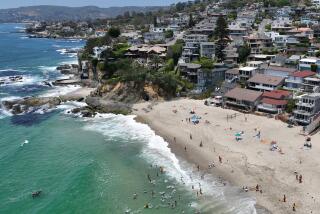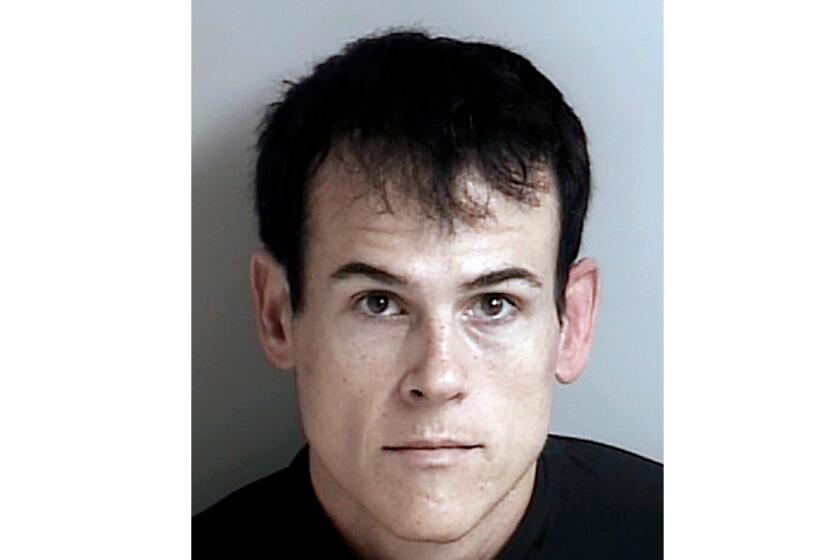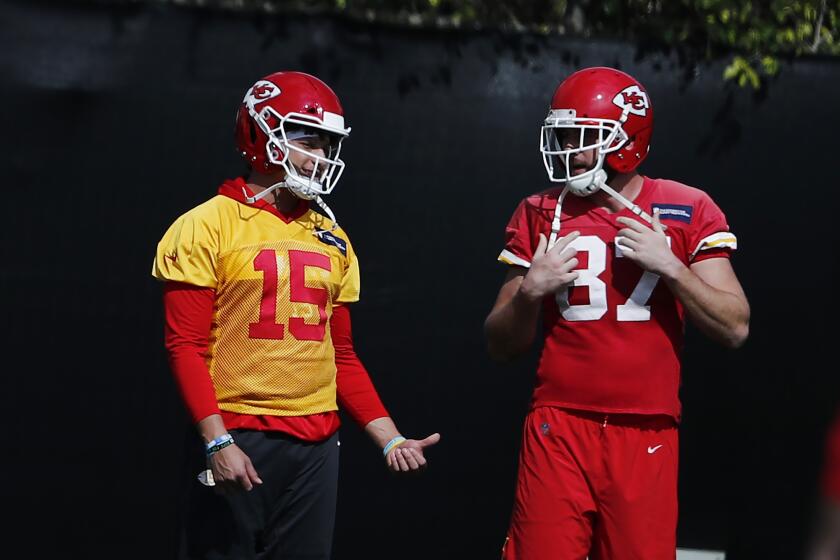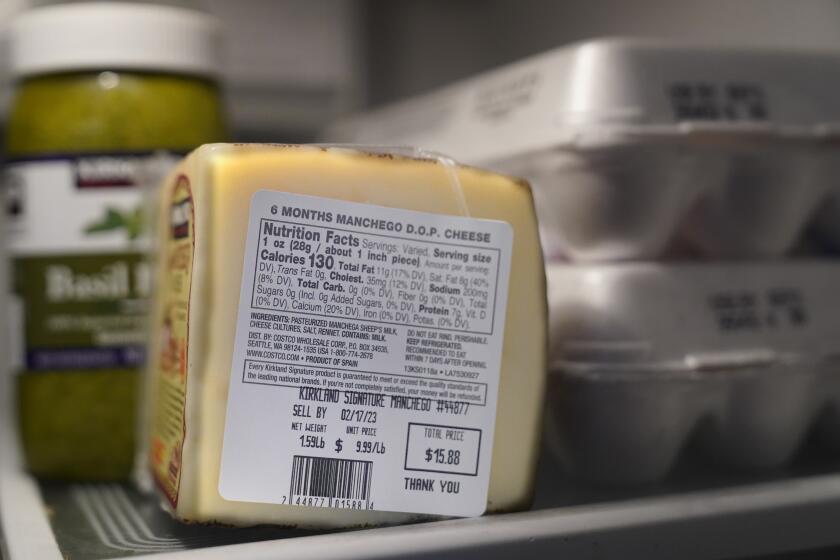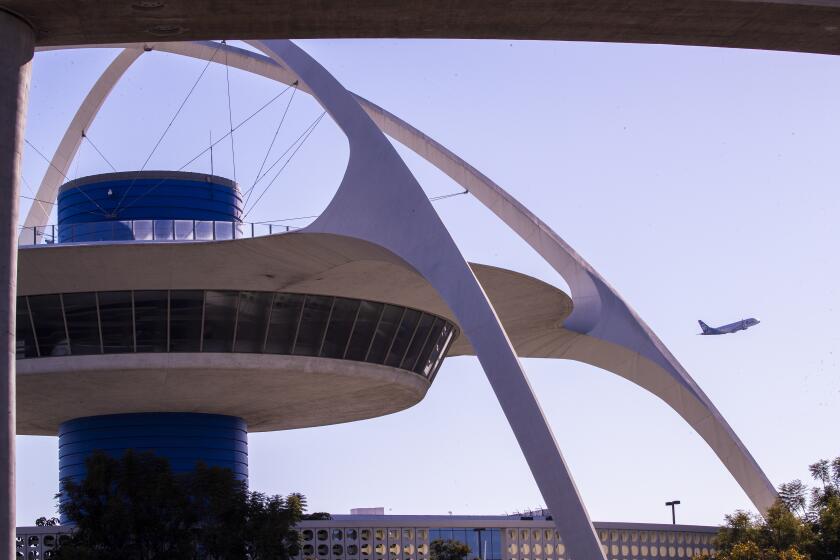Name change touches a beach community’s soul
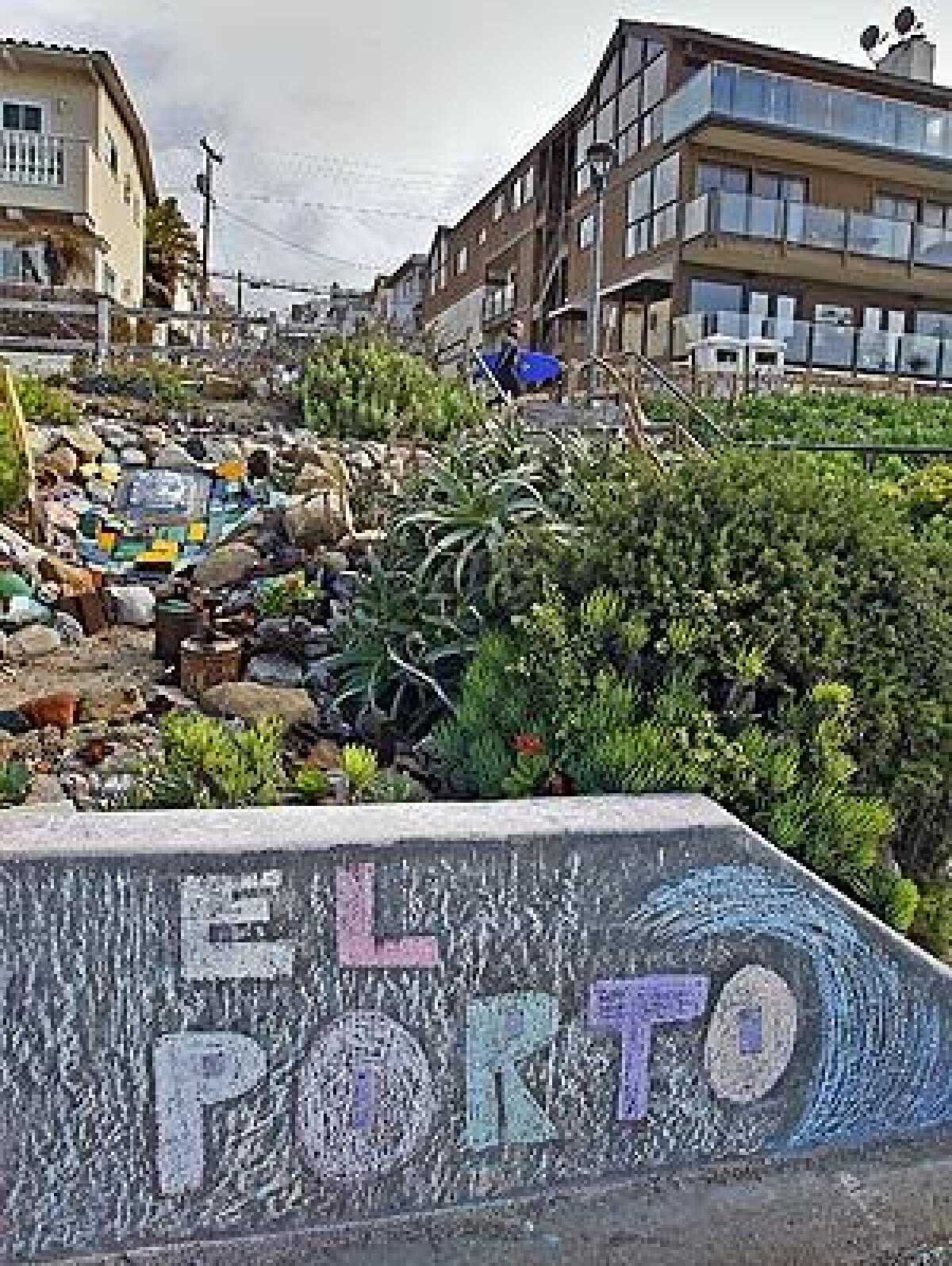
Don Spencer stepped into the recess of his bay window and stared at the rooftops terraced beneath him, all the way to the sea. He spoke of a childhood easy to imagine but difficult, by now, to re-create.
Spencer’s early days were spent tumbling in the local surf break, his evenings cavorting through the dunes, the sand strafing his ankles, the same song, it seemed, spilling some nights through the windows of the neighborhood bungalows: “Vaya con Dios, my darling; Vaya con Dios, my love.”
Life, he said, “was a banquet -- more goodies on the table than anyone could get to in a lifetime.”
But that was half a century ago, before the tiny community of El Porto was folded into the town of Manhattan Beach, back when it was still a secluded, orphaned and sometimes lawless whisper of L.A. County beachfront. Today, Manhattan Beach is one of the most expensive cities in California. El Porto, which pokes out of the northern tip of Manhattan Beach like a hitchhiker’s thumb, hasn’t missed out on the ride.
Along El Porto’s only commercial strip, on Highland Avenue, one barbershop recently became a chic home decor boutique, another a high-end clothier. The dry cleaner became a restaurant offering chipotle aioli, and down the block, a dive bar is being rebuilt as a martini lounge.
So, late last year, city leaders thought they were just going with the flow when they decided that El Porto’s business district needed a name -- “a brand,” said Ron Baker, who owns the popular restaurant Bora Bora there, “an identity.”
No one much noticed until the decision -- “North Manhattan Beach” -- was announced. It wasn’t so much the new name that ruffled feathers. It was the fact that city officials had dismissed, out of hand, another of the proposed names, one that happened to have been used by locals for decades: “El Porto.”
In the early years, some in Manhattan Beach said the words -- “El Porto” -- as if they were shooing a stray dog, as if they were talking and spitting at the same time. Their Manhattan Beach was a gentle and civil place of banana trees and beach volleyball, with well-groomed neighborhoods dubbed the “tree section,” the “hill section” and the “poet section,” the latter named after streets called Keats, Shelley and Tennyson.
Whatever the law-and-order crowd frowned upon at the time -- booze during Prohibition, raucous dancing during the early days of rock, pot in the ‘60s, coke in the ‘70s -- could be found in El Porto, often with great ease.
Add in the adjoining surf break, one of the most reliable in Southern California, and nearby Los Angeles International Airport, which made El Porto a common stopover for young pilots and flight attendants, and El Porto was frequently bleary-eyed by Monday morning.
Children were warned not to go there, said Jan Dennis, a former mayor and a historian working on her sixth book about Manhattan Beach.
“It was wide open,” Dennis said. “It was a place where people could go to do their thing, so to speak.”
For decades, El Porto, which had its roots in a scattered patch of seaside cottages that serviced the oil business or served as seasonal getaways, was unincorporated county land. In the late ‘70s, homeowners launched a drive to get adopted by incorporated Manhattan Beach, which initially demurred, partly out of fears it would run out of fresh water. In 1981, the deal went through; El Porto, all 34 acres of it, became part of the city -- sort of.
“People just felt like it wasn’t part of the Manhattan Beach scene. That continues today,” said Dennis. “You don’t think of El Porto as part of Manhattan Beach.”
That’s what community leaders were hoping to change when they adopted a new name for El Porto’s business district. They were looking for the sense, said Baker, that their commercial drag might be viewed as a viable alternative to the immaculate stretches of boutiques and cafes in the heart of Manhattan Beach, closer to the city pier.
With the new name came plans for street paving, for sidewalk cleaning, for trash cans that all look alike, for 22 large banners unifying the businesses along an 11-block stretch of Highland Avenue.
“You can’t buy or sell the soul of a community,” Baker said. “But you can’t ignore the value of property. . . . It’s economic evolution.”
But in a more subtle way it was a social evolution too. The business community was also looking to move beyond El Porto’s fun-loving but often sordid past. It couldn’t be called “El Porto Business District,” Baker said, because that would have elicited memories of what he describes as the “three Bs -- bars, bikers and booze.”
On paper, the adoption of the name was simple.
El Porto -- technically, the part that was annexed -- stretches along the coast from 38th Street to 45th Street, which is also the El Segundo border. The new business district stretches from 32nd Street to 43rd Street. They weren’t an exact match, in other words -- proof, city officials insisted, that they were merely trying to layer the new business district name on top of the old community name, not supplant one with the other.
“El Porto is the surf,” said City Councilman Mitch Ward. “North Manhattan Beach is the turf.”
It was a distinction lost on many locals, who felt city leaders were turning their back not just on the area’s name but on its very past. Even some who tried to play along were pushed over the edge when El Porto business leaders quickly adopted the trendy shorthand “NoMa,” as in “SoHo,” the neighborhood in the other Manhattan.
One disgusted resident, Eric Lyman, wrote to a local paper asking whether the names “South Brentwood” and “North Coto de Caza” were already taken.
“This is about money. We’re going to get rid of our heritage to make money,” said Lyman, a musician and third-generation Manhattanite who lives in a house his grandfather built.
“It’s hard to let go of some things,” he said. “There is a pride in having been here first. There are a lot of people who have lived here a long time, who are not ecstatic about the pace of development. It’s easy to just call it ‘progress.’ That’s an easy thing to say.”
With a simple name change they thought no one would ever care about, city leaders have stumbled onto the third rail of the L.A. County waterfront.
On the one hand, towns are trying to hang on to the last shreds of their playful, laid-back image, an image written into Beach Boys songs and American lore. On the other hand, developers are tearing down mansions to build bigger mansions, and many can barely afford to feed the meters at the beach, much less move in.
The same debate is playing out in Marina del Rey, where last month, activists seized on a review of the land-use plan, outraged that public parking and public boat slips have been booted in favor of swanky hotels and the like. It’s playing out in Redondo Beach, where activists recently pulled a cartload of 8,000 signatures into City Hall, demanding more public input on zoning changes.
Back at his bay window at the top of the hill, looking down at El Porto, Don Spencer can watch the change unfold before him. When he was a kid, some land east of the dunes was so remote and forbidding it was known as the “back country.” The lot where he built this house once cost his father -- who worked as a crude foreman in the nearby oil fields -- $1,100.
By no means, however, does the 71-year-old artist subscribe to the notion that change is, by definition, bad. But, like Lyman, he’s not sure he can call it all progress either.
“It’s a philosophical question, an intellectual question. You have to be objective in defining things like ‘better’ and ‘lesser,’ and that means defining what enhances life and what diminishes life. It’s fascinating,” he said.
“We are a community consisting of winners. And that isn’t so shabby. But it has driven out those who play the game less well. It has diminished the cast of characters. . . . Still, I don’t see that name going away. A soul is a soul. And whatever we call it can’t impact reality. Right?”
More to Read
Sign up for Essential California
The most important California stories and recommendations in your inbox every morning.
You may occasionally receive promotional content from the Los Angeles Times.


